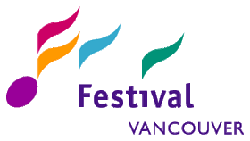
 |
|
| previews | |
| concerts | |
| dance | |
| events | |
| opera | |
| symphony | |
| theatre | |
| about us | |
| reviewers | |
| archives | |
| links | |
| terms of use |  |
 The
Music of Paul Ruhland
The
Music of Paul Ruhland
Composers' Jazz Orchestra
Paul Ruhland, Leader
Date 14 August 2006, 20.00 Venue Vancouver East Cultural Centre
Reviewer Ed Farolan
Jazz singer Dee Daniels introduced Paul Ruhland (b. 1930) and the orchestra, and surprised us with her secret: she said she'll start singing with this group when it has its next concert. The audience gave her a hearty applause. The jazz world is totally familiar with Dee: she's an incredible jazz singer because she has a four-octave range, and she sings gospel, jazz, and the blues comfortably in all venues be it The Orpheum or an intimate place like Richards on Richards. Anyway, I look forward to hearing her sing with this band.
August 14 was the world première of Paul Ruhland's compositions. Not only does he conduct and compose but is himself an accomplished bassist who toured with singers Jack Jones and Rod Mckuen. This concert was dedicated to the memory of trombonist Dave Robbins, his friend and mentor for over fifty years, with whom he collaborated as composer/arranger on hundreds of CBC radio programmes.
Ruhland's compositions are exciting because they not only bring back memories of the big band jazz era but also because he has infused certain contemporary features in them. The first number by this twenty-piece orchestra was "Roseland Stomp." Ruhland introduced it as inspired by the music played at the Roseland Ballroom in New York. It was a stomp indeed, and got the audience rearing to go.
The next one was a slow and easy blues number, "A Portrait in Blue," with Brad Turner on solo trumpet. Brad was outstanding; he reminded me of Miles Davies's haunting rendition of "Aranjuez." Next was another blues number, "Blue Dreams." Ruhland said he didn't know what it was about but that all of us have some blue dreams. The piece started chaotically but then later reverted to the soft and easy blues tempo.
"Prime Time" came next. It was back to the fast tempo reminiscent of Count Basie, followed by "Fanfare and Prelude," a number reflecting Ruhland's training in his youth at the Vienna Conservatory of Music. Another such semi-classic piece was "Concertino for Jazz Orchestra," a mix of the classical and jazz. In his intro to these two, Ruhland commented: "It's time to get serious."
In "Quantum Leap," Ruhland said he was experimenting on atonality; the first section of the number had hints of this, as in Asian music, particularly Hindi and Chinese, but then towards the end, the piece got back to the rhytmic jazz tempo. Another experiment in jazz which may be classified contemporary and futuristic is "Nexus" which Ruhland introduced as a composition dedicated to our "connection with humanity."
The longest piece was "Synchronicity," a "suite in four movements". This featured an eclectic rendition of jazz from the cool, lazy blues in movement No. 2, to the fast tempo in movements Nos. 3 and 4. Ron Johnston at the piano reminded me of Dave Brubeck. Jack Stafford, alto saxophone, was outstanding in his solo, and the others in the orchestra had their chance to do their own solos. That's what's great about jazz: everyone's a star and has his few minutes of fame.
The audience, composed of young and old, gave Ruhland and his band a standing ovation at the end of the two-hour stint. I look forward to seeing him play again, and hopefully with Dee Daniels as vocalist.
© 2006 Ed Farolan
